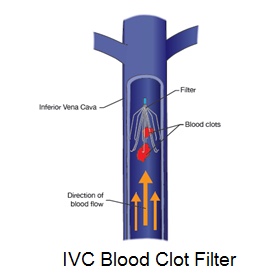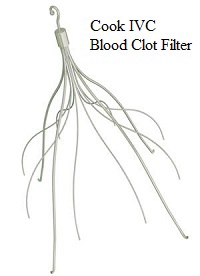 IVC filters are a poor choice for trauma victims. Patients implanted with IVC filters were no more likely to survive more than 24 hours after injury than those who received no filter, according to a study published in JAMA September 28, 2016. The research examined 451 trauma patients given an IVC filter, against a control group of 1,343 not given a filter. The study also referenced several other points which give cause to question whether the benefits of IVC filters are worth their risks.
IVC filters are a poor choice for trauma victims. Patients implanted with IVC filters were no more likely to survive more than 24 hours after injury than those who received no filter, according to a study published in JAMA September 28, 2016. The research examined 451 trauma patients given an IVC filter, against a control group of 1,343 not given a filter. The study also referenced several other points which give cause to question whether the benefits of IVC filters are worth their risks.No Significant Difference
The research study concluded there was “no significant difference” in survival for trauma patients with or without an IVC filter, whether or not they had venous thrombosis.
Death Risks rise with IVC Filter Dwell Time
The authors’ conclusions called for a reexamination of the use of filters in the trauma population, especially given the fact that removal rates are low “and there is increased risk of morbidity in patients with filters that remain in place.” The longer the filter remains in place, the more likely it is to cause problems.
Venous Thromboembolism (VTE)
VTE is a significant cause of morbidity and mortality in the U.S., with some 900,000 patients a year developing VTE or pulmonary embolism (PE). Blood thinners are typically used for VTE prophylaxis in hospitalized patients or for treatment of acute venous thromobosis. Blood clot filters are often implanted in patients for whom blood thinners are contraindicated, as they often are for trauma patients.
IVC Filter Use Increases despite Lack of Evidence
Study authors Shayna Sarosiek, MD; Denis Rybin, PhD; Janice Weinberg, ScD; and others point out that despite a “lack of high-quality evidence” to prove the safety and effectiveness of IVC filter placement, IVC filter use has increased in the trauma population. The authors set out to “delineate the long-term mortality risk associated with IVC filter placement in trauma patients with and without a VTE. They performed a retrospective cohort study of trauma patients at Boston Medical Center at Boston University School of Medicine.
IVC Filters –No Benefit
Once the trauma patients survived the initial injury for 24 hours, there was no significant difference in mortality between those who received an IVC filter and those who did not. The data the researchers saw showed no benefit or decrement in long-term mortality for trauma patients with IVC filter insertion, whether or not patients had DVT or PE. Most filters were placed in those without VTE, with 91.6% (413/451) not removed. That indicates long-term IVC filter placement did not increase survival through prevention of future PE or decrease survival because of IVC filter complications (embolism, ruptured viscera, filter fracture).
IVC Filters Need Removal
The authors also noted that most IVC filters are not retrieved in a timely fashion and no clear protocol has been set for a timetable to retrieve them. But the authors said that their study was designed to examine mortality only, “and any nonlethal morbidity attributed to filter insertion would not be evident in these data.
Study Conclusion
The authors concluded that their data indicate IVC filters “should not be placed in trauma patients in an effort to decrease all-cause mortality.” They also noted that “given the expected morbidity of long-term IVC filter use, filters should be removed as soon as a patient’s contraindication to anticoagulation resolves.”
IVC Filter Lawsuits
The failure of IVC filter manufacturers to inform implanting surgeons of the need to closely monitor IVC filter implantees, and to remove their filters as soon as anticoagulation resolves, is just one factor which leaves IVC filter makers vulnerable to IVC filter lawsuits.
Related
- IVC Filter Lawsuit
- Cook IVC Filter Attorney
- Bard IVC Filter Lawsuits
- IVC Filters not retrieved
- IVC Filters not FDA Approved

by Matthews & Associates




